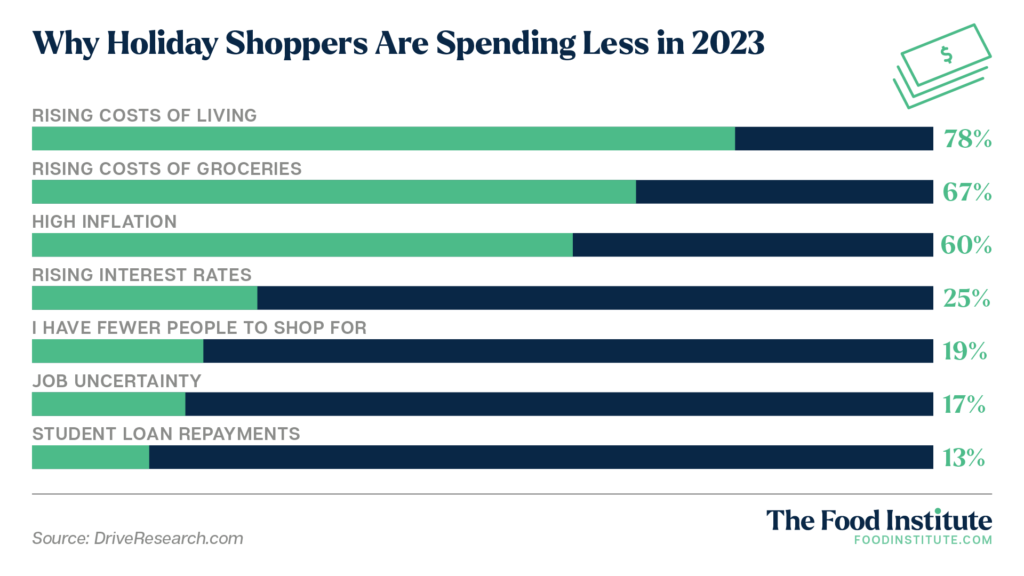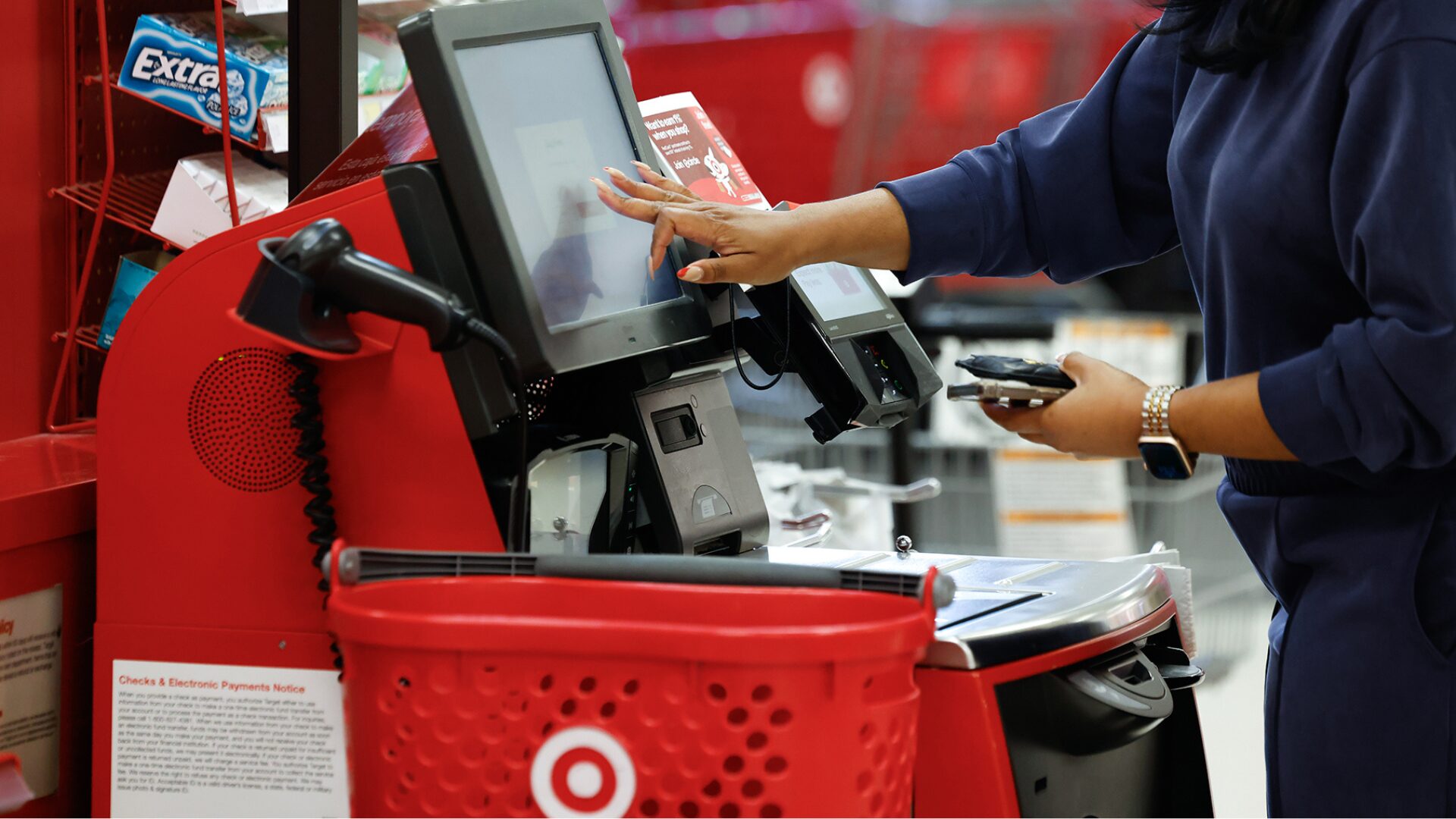The only thing more dependable than Mariah Carey during the domestic holiday season is the Santa’s sack-worth of Hallmark movies. This year, 40 (40!) new Hallmark movies hit the air from early October through the new year, chock full of career-driven citygoers returning home, meet-cutes happening from Notting Hill (Christmas in Notting Hill) to Cherry Lane (Christmas on Cherry Lane), and so much hot chocolate and holiday lights that Hallmark may very well own a Wonka-esque reservoir of bubbling chocolate and a high-voltage power supply company specifically for the miles of holiday lights that festoon its sparkly features.
And then there’s Add to Heart, a milquetoast carbon copy (at least on deckled holiday paper) that stands apart from the rest for one simple reason: it was produced by Walmart, not Hallmark, in association with TikTok, Roku, and YouTube. And though it follows a familiar formula, it has one thing its forebears lack: shoppable links for its wintry scarves, its holiday baubles, its candy and spice and everything nice.
In other words, I watched Add to Heart so you don’t have to. And if we become what we behold, as Marshall McLuhan once wrote, then Walmart’s fourth-quarter earnings should be cause for celebration long after the hot chocolate has cooled and the flannel has been flung. Nearly every scene features something that, by nature of it merely appearing in Add to Heart, is probably available at a Walmart near you, from star-strewn holiday toques and sleek water bottles to on-trend furniture, lighting, and more. It’s not even Walmart’s first foray into shoppable media – that occurred in a previous season on Bravo during a collaboration with Below Deck Mediterranean.
In other words, Walmart hopes viewers…
Watch, Shop, and Swoon
Don’t call it a RomCom – it’s RomCommerce.
That’s according to Walmart’s Nov. 28 press release, timed a few days after Thanksgiving so consumers can catch their breath and look forward to (or fret) this year’s holiday spending. In a year beset by inflation, reductions in holiday hiring, and once-tepid Black Friday outlooks, Walmart may be onto something – once the snow had settled, consumers spent a record $9.8 billion in e-commerce during Black Friday this year, fueling hope for a robust holiday sales season.
“We know gifting and curling up to watch a favorite Christmas movie are part of so many families’ traditions,” said William White, chief marketing officer at Walmart. “So, what better time to launch an innovative, first-of-its-kind shoppable series?”
Released over three days in early December, Add to Heart is a 23-episode glimpse into what Walmart has in store for shoppers as the holidays draw nigh. The show features “more than 330 products across the experience, ranging from furniture and holiday decor to clothing.”
And it is an experience – there’s something about watching a show bursting with wintry kitsch, familiar Hallmark tropes (the career-driven protagonist; the old flame from home; more holiday double-entendres than you can shake a candy cane at), and the sort of quick-cut scenes and ultra-crisp sets that only exist for swift Yuletide blasts of serotonin. And it is swift – each episode is less than five minutes, and some clock in under three.
Will that translate to sales, however? It’s hard to tell, and it will be fun to hear from Walmart after the holidays and Add to Heart has run its course. Airing on three platforms (YouTube, Roku, and the pocket-laden TikTok) and also playing in stores, Add to Heart is nothing if not a bold step into the media-laden retail environment increasingly influenced by in-store retail media networks.
“This campaign’s success will show advertisers, media networks, and consumers the true benefit of contextual commerce…with a seamlessly moving consumer experience from inspiration to purchase,” said Katy Jordan, senior director of commerce media at The Mars Agency.
“I believe it will also further prove the ability of retail media networks to capture customers at all stages of the purchase funnel – meeting consumers where they are with an experience they want to engage with and inspire purchase.”
Except this time, however, the retail network is in consumers’ living rooms and alive on their phones.
Will Shoppers Add to Cart?
“The U.S. consumer is bifurcated,” said Jason Benowitz, senior portfolio manager at CI Roosevelt, to Reuters. “Lower-income households are pulling back on discretionary purchases… But outside of the lowest tier, we believe household consumption remains resilient,” he added.
And that bifurcation is what Walmart, Amazon, Target, and other big retailers are hoping for as holiday panic sets in with each day drawing closer to family and friends gathering, gifting, and spreading the bounty of their December retail consumption.
“While there are parts of the consumer that definitely are much slower and weaker, from a spending perspective, there’s still a lot of money sitting on the sidelines,” said Jimmy Lee, CEO of Wealth Consulting Group, in the same article.
“[The holiday season] actually could be a little bit better than what most people think,” he concluded.
Per recent data from Mintel, nearly 60% of Americans will purchase something over social media this year. Walmart hopes to foster that connection (and those dollars spent) with Add to Heart.
“This approach to advertising seemed to be a reverse-engineering of product placement,” said Reilly Newman to The Food Institute, a brand strategist and founder of Motif Brands.
“By creating the ‘faux’ content in a way that deliberately uses certain products, the brand can put on display their products in appealing ways…What made this even more successful is the fact that Walmart was self-aware in its efforts” in crafting a new paradigm in holiday programming – RomCommerce, which Reilly said helps make up for any cringey placements or even quality of content “because they aren’t hiding the fact that this is indeed an advertising effort.”
Though a novel approach in today’s retail and entertainment world, Reilly noted that Disney has been doing this (more or less) for decades; “Disney films are just two hours of advertising…As the barrier between content and consumer interaction blurs, we can bet on more integrated content commerce.”
“The strategy is smart for Walmart, which is hyper-focused on shortening the distance between inspiration and purchase,” said Leslie Lee, senior vice president of Vistar Media, to The Food Institute.
As shoppers flock to retailers to stuff their families’ stockings, the distance between inspiration and purchase is shorter than ever, though the goals of watching Add to Heart in the media and electronics section of a Walmart are different from what the brand hopes to achieve from the comfort of one’s home during the holidays.
“In-store showings are likely more of an engagement and brand building initiative,” she added.
Lee says the point of shoppable video is to create shopping experiences where none currently exist, exhibited most plainly today as influencers (and the consumers they’re influencing) flock to TikTok.
“Nothing is as powerful as in-store shopping,” she said. “People see things and like them and they buy them. Insider Intelligence released data on December 6 which showed nearly a third of U.S. shoppers who discovered an item in-store purchased it right away.”
And since gift-giving is inherently an emotional experience, Lee said Walmart is leading the way for retailers by “creating new shopping experiences and combining the physical experience of shopping with the engagement and emotional storytelling of content.”
And how that content holds up over the next few weeks will help dictate the most important question – will Walmart produce a sequel next year for the expanding WalmartVerse? January is another robust retail month given all the returned ties, sweaters, socks, gadgets, gizmos, and more. Perhaps Add to Heart 2: The Return will light up the omnichannel during Christmas 2024.











